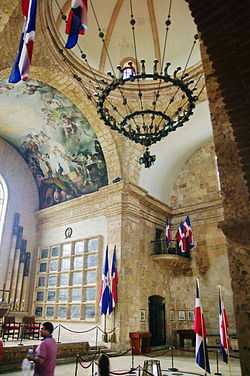National_Pantheon_of_the_Dominican_Republic
National Pantheon of the Dominican Republic
Jesuit church in the Dominican Republic
The National Pantheon was built from 1714 to 1746 by the Spaniard Geronimo Quezada y Garçon and was originally a Jesuit church.[1][2] The structure was constructed in the neoclassic-renaissance style. Today, the structure stands as a national symbol of the Dominican Republic and serves as the final resting place of the Republic's most honored citizens.[citation needed]

This article needs additional citations for verification. (October 2011) |

